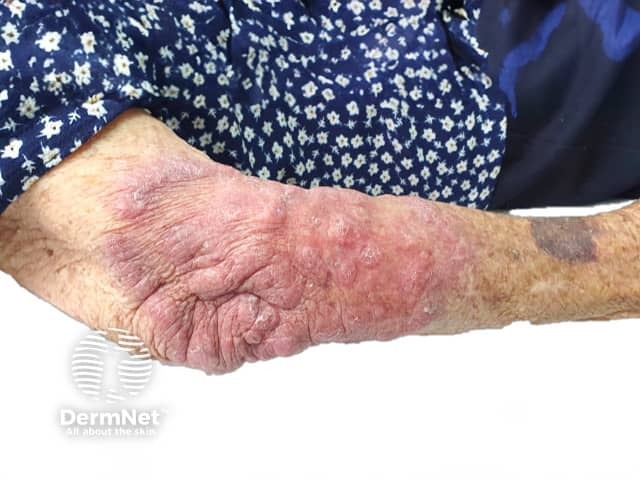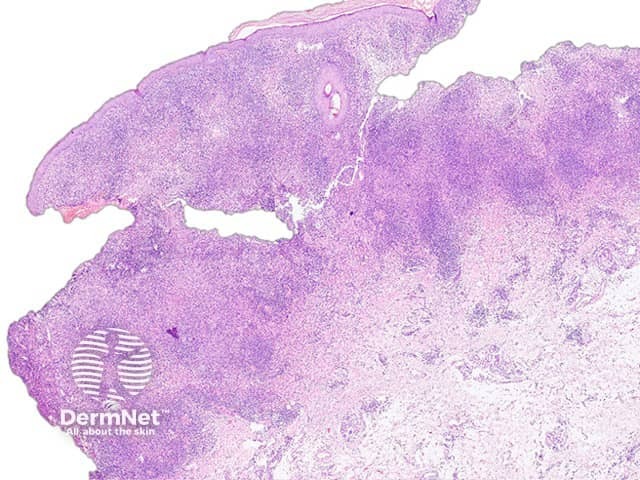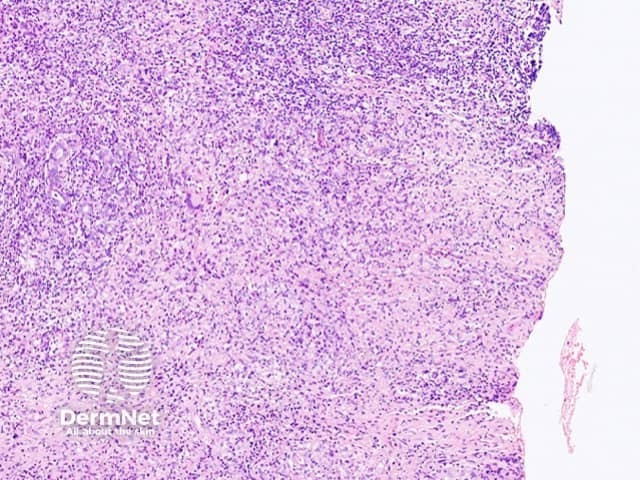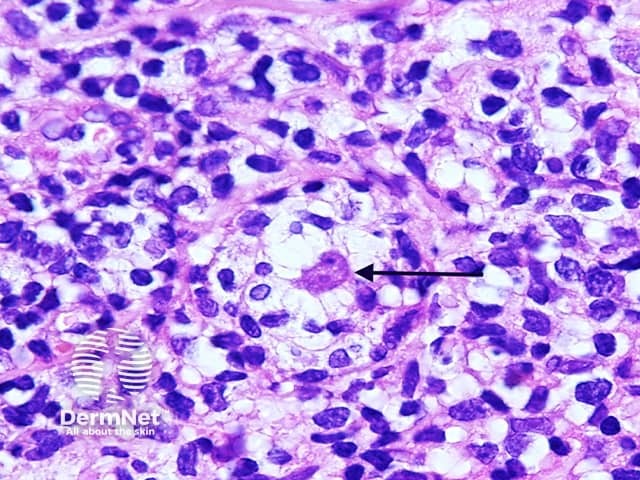Main menu
Common skin conditions

NEWS
Join DermNet PRO
Read more
Quick links
Infections Diagnosis and testing
Authors: A/Prof Patrick Emanuel, Dermatopathologist, Clinica Ricardo Palma, Lima, Peru; Dr. Alex Ventura León, Pathologist Universidad Peruana Cayetano Heredia, Lima, Peru; Dr. Cesar Ramos, Dermatologist, Lima, Peru. DermNet Editor in Chief: Adjunct A/Prof Amanda Oakley. Copy edited by Gus Mitchell. October 2019.
Introduction Histology Special studies Differential diagnoses
Balamuthia mandrillaris (B. mandrillaris) is a free-living amoeba well known in endemic areas for causing potentially fatal neurological infection. It often presents primarily in the skin as an indurated plaque on the central face or — less commonly — on other parts of the body (figure 1).

A skin biopsy of a plaque due to B. mandrillaris, shows a dense dermal infiltrate with loose granulomas accompanying an infiltrate rich in plasma cells and lymphocytes (figures 2,3). Characteristically, there are multinucleated giant cells free in the dermis, outside of the loose granulomas (figure 3).
The causative organisms can be extremely difficult to find. The clinical presentation and unusual infiltrate (figures 2,3) should prompt a search for B. mandrillaris with serial sectioning of the tissue block.
The organisms are quite characteristic. B. mandrillaris have a granular to vacuolated cytoplasm with irregular contours (pseudopods) and contain a nucleus with a large central karyosome (figure 4, arrow).

Figure 2. Balamuthia mandrillaris pathology

Figure 3. Multinucleate giant cells free in the dermis, outside of the loose granulomas

Figure 4. Balamuthia mandrillaris pathology
The B. mandrillaris organisms do not stain with Periodic acid-Schiff (PAS), Gomori Methenamine-Silver Nitrate Stain (GMS) or acid-fast bacilli (AFB). The amoeba cannot be cultured on regular agar plates, as the organism does not feed on bacteria. It can be cultured on primate liver or human brain cells. Polymerase chain reaction (PCR) studies may help in the identification of the organism.
Acanthamoeba species — these tend to cause ulcerated lesions with epithelial hyperplasia rather than indurated plaques. Culture or PCR studies can be helpful
Naegleria fowleri — this infection usually does not present primarily in the skin. Rather it usually presents as an erosive upper airway infection. N. fowleri is more common in North America while B. mandrillaris is more common in South America. Culture or PCR studies can be helpful.